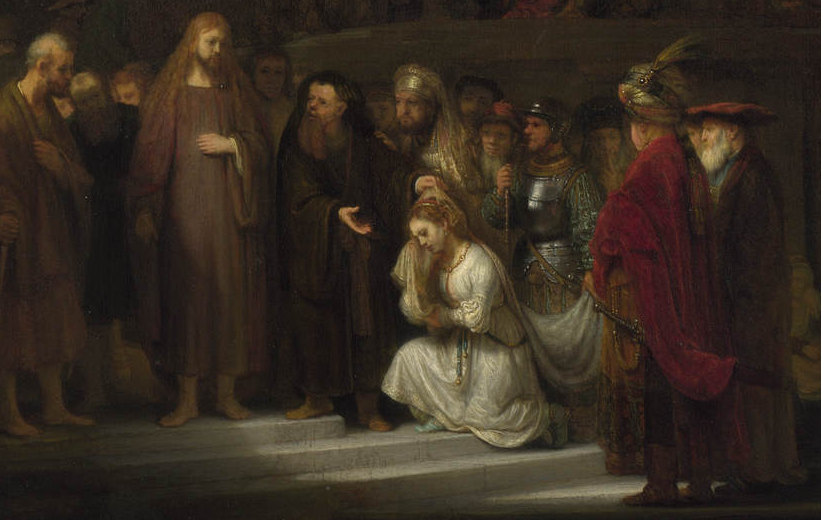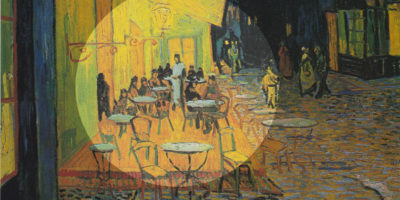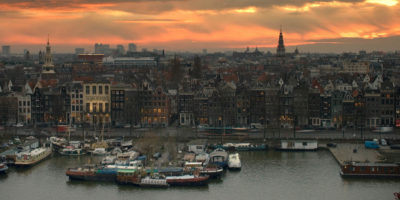What communication bridges can we find in our surroundings to engage with fellow Europeans about key life issues? Each year in our masterclass in Geneva, Brussels or Amsterdam–we have tried to discover connections of interest to the non-religious.
‘Paradox’ was our theme this year, as we wrote about last week and began exploring a few of the many contrasts and contradictions of Amsterdam. Talk of paradox can lead eventually to the strange contradictory mixture of glory and shame, dignity and depravity each of us experience in our own nature. How do we explain this human condition which Paul wrote about in Romans chapter 7: ‘For what I want to do I do not do, but what I hate I do…’?
Rembrandt van Rijn (1606-1669) was one of Holland’s–and the world’s–greatest painters. His art often expressed the paradox of the moral and spiritual condition of humanity. His own life too was full of contradiction and contrasts, much like his famous use of light and darkness called chiaroscuro, highlighting his subjects in paint and ink.
Although his life and career was linked to Amsterdam from 1631 onwards, he was born and raised in Leiden with a mixed Catholic-Protestant background. His life and work need to be understood against the backdrop of historical developments in the new largely Protestant Dutch Republic still waging its Eighty Years War with Catholic Spain.
His artwork might suggest he was staunchly orthodox in his Protestantism, being preoccupied with the Bible far more than his contemporaries. He produced over 160 paintings on Biblical themes, and a further 80 etchings and 600 drawings inspired by the Bible.
Yet it is not clear if the painter had any particular church affiliation. Trained by Catholic artists, he painted Calvinists, Mennonites, Catholics and Jews alike. While the gravestone of his wife Saskia can still be seen in Amsterdam’s Oude Kerk, and Rembrandt’s remains are buried somewhere in the Westerkerk (both Reformed churches), some art historians believe that from 1640 onwards, his art reflected Mennonite beliefs and themes.
What we do know is that he was not a model church member. Saskia died after only eight years of marriage and bearing him four children, three of whom died less than two months old. Rembrandt then started a physical relationship with his surviving son’s nurse, Geertje Dircx, who later tried to sue him for breaking a promise to marry her.
Banned
The next woman in his life was Hendrickje Stoffels, who bore him a daughter, Cornelia, the only child to outlive him. We learn something of Rembrandt’s standing with the church from the fact that Hendrickje was banned from Communion for ‘practising whoredom with the painter Rembrandt’.
His poor handling of finances and failure to meet important clients’ deadlines led eventually to bankruptcy, forcing him to sell the magnificent house on Jodenbree, now the Rembrandt Museum, a short walk from where we held our masterclass.
And here is the paradox: despite his failures of character and judgement, Rembrandt has left the world an unparalleled artistic legacy in biblical themes of God’s handiwork, grace and repentance, forgiveness and redemption. Space allows us only two brief illustrations here.
Shortly after moving to Amsterdam, Rembrandt received his first group portrait commission: from the Surgeons’ Guild of St Luke, who held occasional anatomy lessons in de Waag (the Weigh House) on Nieuwmarkt. This turreted building, the city’s oldest remaining non-religious building, was once the St Antony City Gate and housed an anatomical theatre under the central octagonal tower.
Revealed
A large copy of the painting The Anatomy Lesson of Dr Nicolaes Tulp hangs in that theatre today, showing seven members of the surgeon’s guild crowded around a corpse of a known criminal being dissected by their chief surgeon, Dr Tulp. Rembrandt was still only twenty-six years old when he produced this ‘painting of the year’, which instantly established his reputation in Amsterdam.
I have seen the words of Dr Tulp inscribed around the eight sides of the turret (roughly translated): ‘The more that is revealed about our human bodies, the more God’s glory is revealed.’ The hidden paradox of this seemingly scientific painting is that the dead body of a transgressor can still reveal the glory of God.
One of the most striking insights I know in Rembrandt’s work is depicted in The Woman Taken in Adultery. (Strangely, we never hear of ‘The Man Taken in Adultery’). Surrounded by her accusers (see photo attached), the woman kneels before Jesus in contrition, dressed in bridal white, complete with a train. Unusually for Christian art, Jesus is garbed not in white, but in a dirty brown.
What a masterful scenario of forgiveness and exchanged righteousness!
Surely those are stories to start a serious conversation.
Till next week,




Thanks for that Jeff! Always enjoy your Weekly Word and like you, I’m “still learning” ! (in my old age…)
This gives us so much more understanding and insight in the life of a man so well known and still so little known about by the majority of admirers.